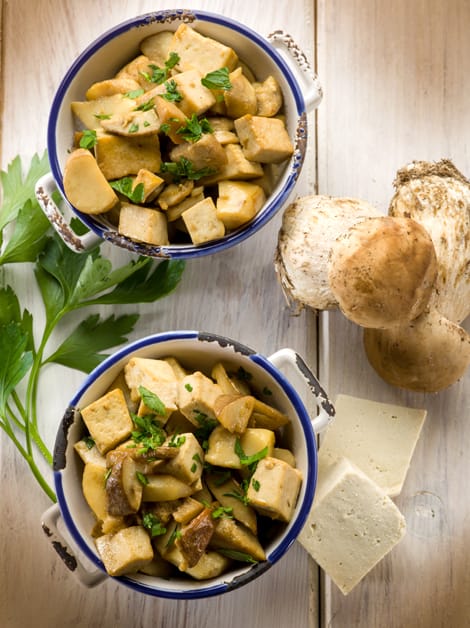Introduction
Vitamin D is important for bones, teeth, and muscles. But, if you’re vegan or vegetarian, you can’t get it from food sources like eggs and fatty fish. Instead, there are other options. Here’s what you need to know about getting enough of this essential nutrient on a plant-based diet.
Get informed on how to get vitamin D if you’re vegan or vegetarian!
What is Vitamin D?
Vitamin D is a fat-soluble vitamin most often found in animal sources. Vegans and vegetarians must source it from other foods such as fortified almond milk, soy milk, orange juice and breakfast cereals with added plant-sourced Vitamin D2. Though, Vitamin D2 is not absorbed by the body as easily as Vitamin D3.
Sun exposure is also recommended to obtain daily requirement of the nutrient. 15 minutes of sun exposure (5 times a week) is recommended. UVB rays from sunlight convert cholesterol in the skin to Vitamin D3, which can be absorbed efficiently.
Sources of Vitamin D
Vitamin D is necessary for our wellbeing. Yet, it may be difficult to get enough of it when following a vegan or vegetarian diet. Fortunately, there exist multiple sources of Vitamin D that can be included in a vegan or vegetarian diet.
In this article, let us examine these sources of Vitamin D for vegan or vegetarian diets. This way, you can guarantee you get the right amount of Vitamin D for optimal health.
Sunlight
Sunlight is an easy way to get Vitamin D. When your skin is exposed to UV rays, your body makes its own Vitamin D. This happens in your skin, usually between 10am-3pm. Except for the winter months, when the sun isn’t so strong.
Be careful not to get too much sun – it increases your risk of skin cancer. Use sunscreen or wear protective clothing when outdoors.
If you can’t get enough Vitamin D from sunlight, check with your doctor.
Supplements
Vegetarians and vegans should take a daily supplement for vitamin D. Look for D3, or cholecalciferol, capsules or tablets for increased absorption. Check the quality of brands by looking for third-party laboratory testing. Dose should be 500-2,000 IU per day. D2 (ergocalciferol) is not recommended.
For severe deficiency, injections or subcutaneous implants can supply a weekly dose of vitamin D that is more potent and quickly absorbed into the bloodstream.
Fortified Foods
Fortified plant-based foods are a great way to increase your Vitamin D intake if you’re vegan or vegetarian. Soy milk, orange juice, cereals, and certain nut butters can be enriched with it. The amount varies from product to product since some have more than others.
It won’t provide 100% of your daily allowance, but it can still help your overall intake if you combine it with other sources. For example, one serving of vegan and vegetarian cereals may have 25% of the RDA while plant milks have up to 40IUs per cup. Look for vitamin D supplements formulated for vegans and vegetarians, too.
Certain foods may also contain lower amounts of naturally-occurring Vitamin D, like mushrooms exposed to UV light or eggs from free-range chickens. However, it’s best not to rely on these unless you know how much sunlight they were exposed to during production.
Vitamin D Intake for Vegans and Vegetarians
Vitamin D is a must-have for good health. But vegans and vegetarians may find it harder to get enough. Don’t worry! There are still many ways to get vitamin D without going against their diet. Let’s explore the best options for vegans and vegetarians to get enough vitamin D:
Recommended Dietary Allowance (RDA)
Vegetarians and vegans over 19 should get 15 micrograms of Vitamin D a day. Younger adults should get 15-20 micrograms a day. Animal-based sources like dairy and eggs are limited, so vegans and vegetarians should supplement their diets with multivitamins or Vitamin D pills. Plant-based sources like non-dairy milk and breakfast cereals may be fortified with Vitamin D.
Sun exposure is also a great way to get Vitamin D. Direct sunlight between 10am and 2pm in the northern hemisphere during spring/summer months will help you meet your daily RDA for Vitamin D. Find safe ways to get direct sunlight when you can.
Upper Limit (UL)
Vitamin D helps the body use calcium. It also supports bones, muscles, and immunity. The Upper Limit (UL) set by the Institute of Medicine for adults aged 19 or more is 4,000 IU per day. There is no advantage to taking more than the UL.
Vegans and vegetarians have trouble getting Vitamin D from food. It is mainly found in fatty fish like salmon and mackerel. There are plant-based options such as fortified orange juice, plant-based milk, and some mushrooms that can be consumed. Vegans and vegetarians should take care not to exceed the UL if they choose to supplement their diet with Vitamin D.
Foods Rich in Vitamin D
Vitamin D is essential in our diets. It’s important for overall health and wellness. But vegans and vegetarians might struggle to get enough of it. Fortunately, there are foods rich in vitamin D that these diets can eat. In this article we’ll look at the foods that can help you get your daily required intake:
- Fortified soy milk
- Fortified orange juice
- Fortified cereals
- Mushrooms
- Almonds
- Tofu
- Spinach
- Egg yolks
Mushrooms
Mushrooms are a yummy plant-based food with Vitamin D! Shiitake, maitake, oyster, and white button mushrooms can produce Vitamin D when they get sun. To get Vitamin D from mushrooms, buy them or grow your own in the sun.
Mushrooms also have health benefits. Maitake mushrooms have antioxidants to help reduce inflammation. Shiitake mushrooms can help cholesterol. Oyster mushrooms might stop cancer. Not all mushrooms have a lot of Vitamin D. Black trumpet tofu has little Vitamin D. Choose your mushrooms wisely for the Vitamin D you need.
Fortified Plant Milks
Strengthened and guarded! Bulletproofed and shored up! Defended and made secure! Reinforced and made solid!
Fortified Cereals
Fortified cereals are a great source of vitamin D. Many breakfast cereals are fortified with the nutrient during manufacturing. To pick the best cereal, check the Nutrition Facts label. It’ll show you the amount of vitamin D in one serving size. Choose a cereal that gives at least 25% of the Daily Value for vitamin D (400 IU). Watch the serving size on the Nutrition Facts label and make sure you get enough of this essential nutrient daily. Other healthy options include whole grain cereals, oatmeal and yogurt with added vitamins and minerals.
You can also get small amounts of vitamin D from a balanced diet. Include fish (e.g. salmon, tuna, mackerel), beef liver, cheese, egg yolks and mushrooms grown under UV light. Aim to add these foods to your diet two or three times a week to naturally increase your Vitamin D intake.
Conclusion
Vegans and vegetarians can find it tough to get the right amount of vitamin D. This is because animal products such as dairy, fish, and eggs are common sources of it. But, there are many plant-based foods with vitamin D. These include mushrooms, fortified plant milks, tofu, tempeh, and fruits, veggies, nut butters, and oils.
To get more of this important vitamin, get outside in the sun or take a vegan-friendly supplement. With careful food choices and sun or supplements, vegetarians and vegans can reach their daily needs for vitamin D!
Frequently Asked Questions
Q1: How can vegans get vitamin D?
A1: Vegans can get vitamin D from fortified foods such as some plant milks and breakfast cereals, or from supplements.
Q2: Are there any vegetarian sources of vitamin D?
A2: Yes, there are vegetarian sources of vitamin D. These include mushrooms that have been exposed to ultraviolet B (UVB) light, fortified foods such as some plant milks, breakfast cereals and orange juice, as well as supplements.
Q3: What other benefits does vitamin D have?
A3: Vitamin D helps to regulate the amount of calcium and phosphate in the body, which are needed to keep bones, teeth and muscles healthy.





